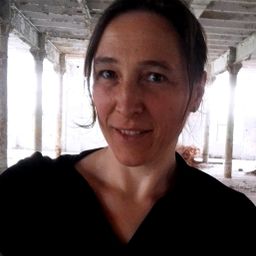Sustainable post mining regions through innovative land use
My Session Status
What:
Paper
When:
9:30 AM, miércoles 31 ago 2022
(20 minutos)
Where:
UQAM, pavillon J.-A. De Sève (DS)
- DS-1580
| In the course of opencast mining, the natural soil became overburst, which had to be cleared as efficiently as possible. What remained were overburst dumps and tailings piles. The landscape changed radically. The production of food or other renewable goods or the value as a nature conserv ation area was initially no longer a goal on these areas. They had no economic, aesthetic or ecological value. It was simply to give n time for the restoration of the soil and its growing vegetation. From the 1950s on, the approach in the former GDR changed and the production of productive areas was sought. However, recultivation was limited to the possibilities in the region. Agricultural technologies and legacies, such as ashes, were used. Too, i t was extensively reforested with pine. The first independent technologies and a high lev el of expertise emerged. In Lusatia, the examples of this can be found in an uninterrupted series. However, the technological discrepancy between the extraction and refinement of coal into products on the one hand and the restoration of safe areas reintegra ted into the natural cycles could only be closed after 1990 with the rehabilitation mining. Today the tradition of innovation developed in the area is continued. There is a diversity of land uses after T oday t he different types of "near - natural" reuse possibilities illustrate the sy n ergies of open mining. traditional cultural and original natural landscape s with innovative forms of design. These attributes show in a special way the "laboratory character" of the Lusatian post-mining landscape by revusing the near - natural landscape and simultaneously creating space for new ideas. On the one hand, renaturalized ar eas and nature reserves include areas that show the adaptation of remediation methods to species protection. On the other hand, they contain elements that recreate the landscape topography and design of the pre - industrial period. In the field of innovation land use and cultural landscape is regading to the topics of man as a social actor, the cultural landscape as anchor and basis of regional identity and value creation, as well as the potentials of innovative technologies and research over time. In the future, it will be crucial to recognize, preserve and at the same time make innovative dynamics and development comprehensible as an opportunity to reco gnise the special character and unique selling point of such specific (and, too, wounded) cultural landscape. T his goes along with awareness raising through intermediation, story - telling, medial attention and marketing . By better reading and unders tanding this unique landscape and tell it to the population, by identifying with the long tradition o f innovation and thus rai se esteem of this environ ment, the better this region will be develo p ing after in the post coal era. T his is the thesis, so far. By learning from the history, from the continuously change over more than 100 years, from the different times and political systems respective organizational structures in open pit areas, best ways for the current structu ral changes will be extracted. Too, what can we lea rn from early e xamples of technical innovations and land use experiments, such fish farming on mine dumps (referring to historical land use), specialized cropping (hemp, lavender, pepper) and regional revegetation (NagolaRe); artificial headwaters; artific ial moor; artificial lake land for recreation (starting with Senftenberger See, Otto Rindt); artificial reservoir system to protect rivers, biosphere reserve and water balance of Berlin; nature paradisesor renewable energies (solar, wind, wood),“Agroforst” and garden cities ? |
